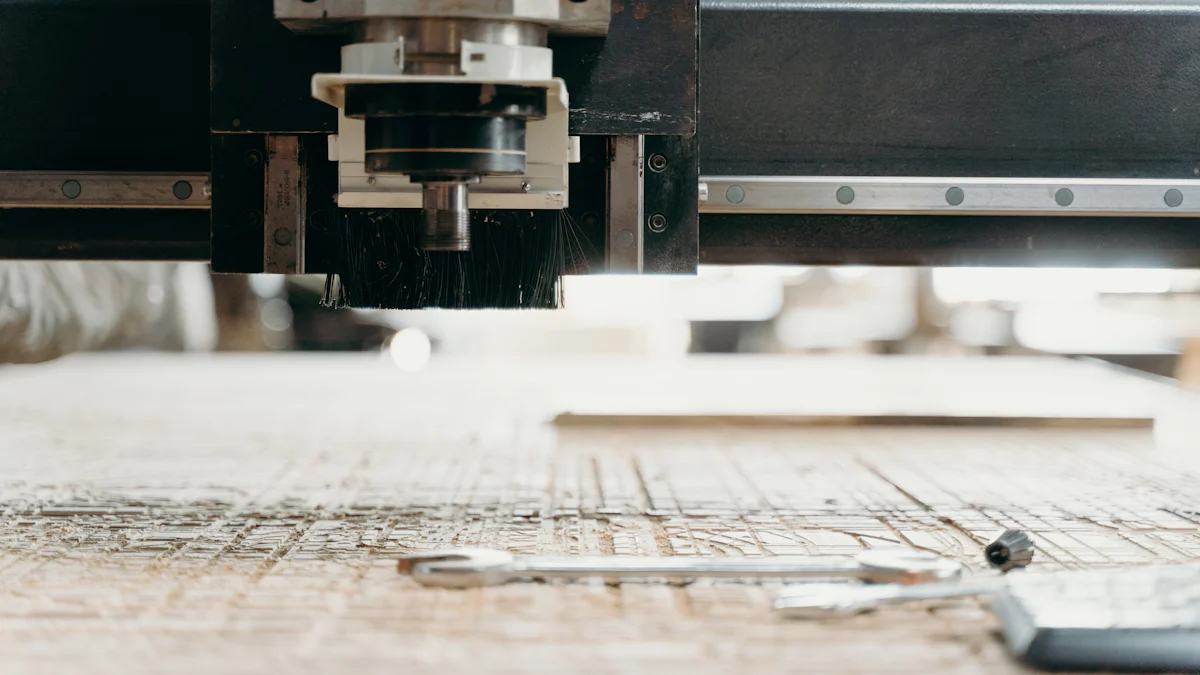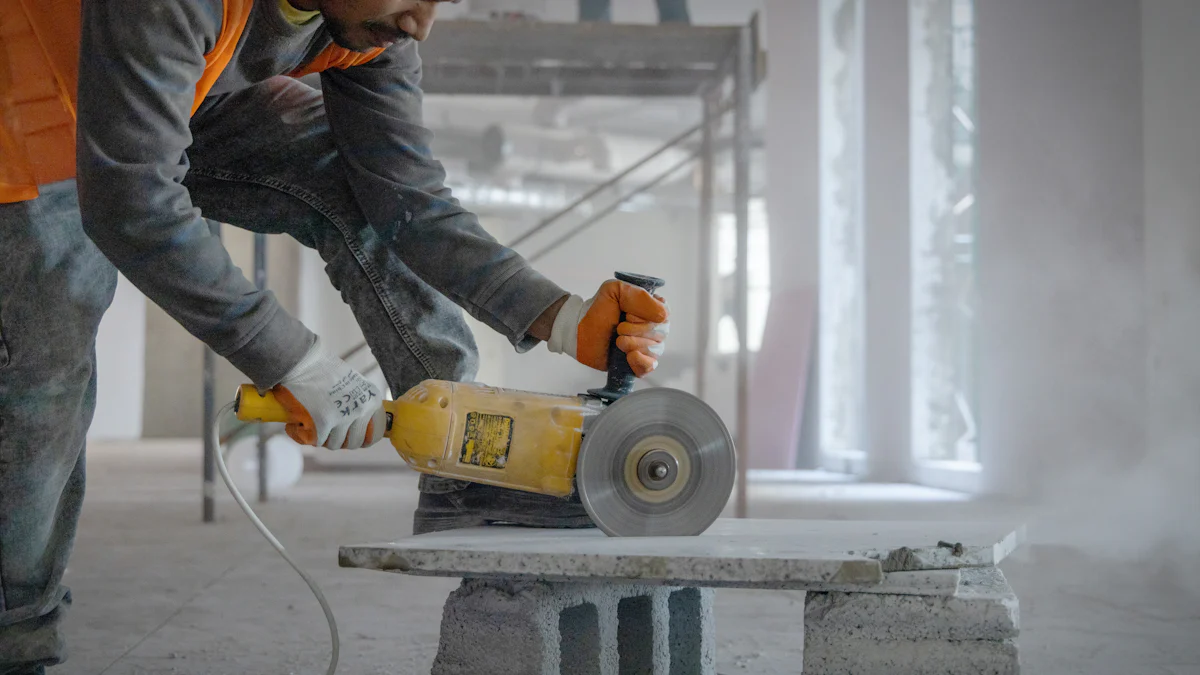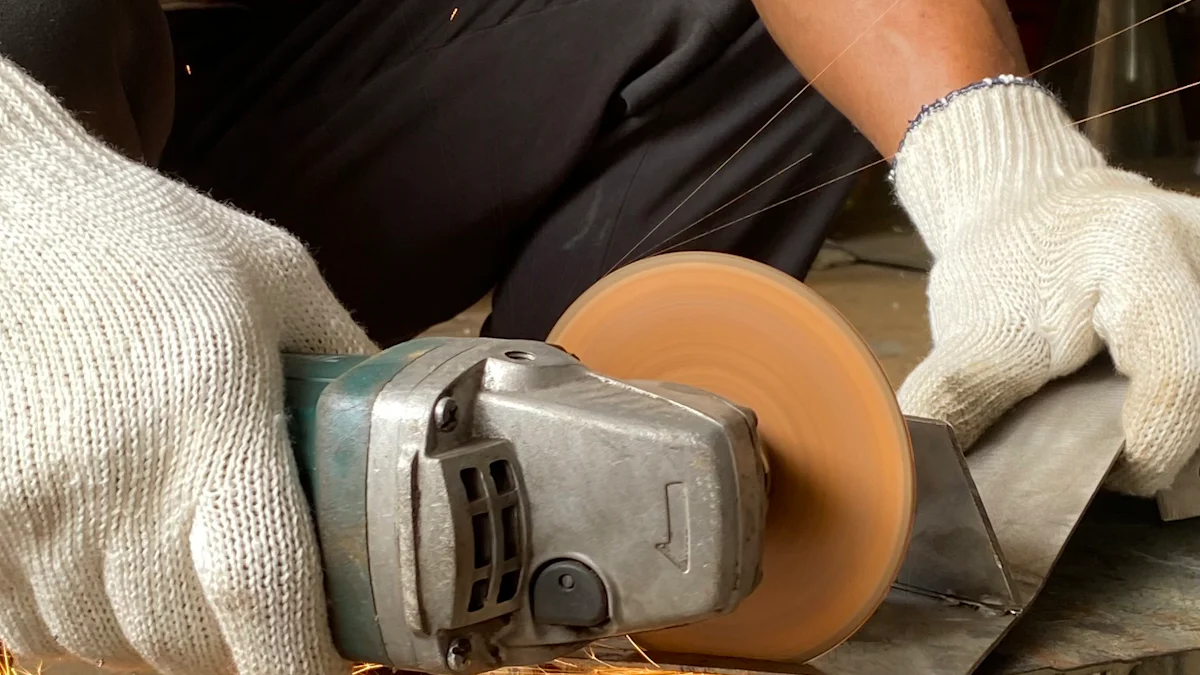
Stone cutting plays a crucial role in both construction and art. The right tools to cut stone can make all the difference in achieving precision and efficiency. A wide variety of tools exist for this purpose, ranging from manual chisels to advanced CNC machines. Choosing the correct tool ensures not only a clean cut but also enhances safety and productivity. The stone cutting machines market reflects this importance, with an expected growth from USD 4 billion in 2023 to USD 5.94 billion by 2030. This growth highlights the increasing demand for effective stone cutting solutions.
Understanding Stone Cutting
Types of Stone
Natural Stone
Natural stone comes straight from the earth. Granite, marble, and limestone are popular choices. Each type has unique properties. Granite feels hard and durable. Marble looks elegant with its veined patterns. Limestone offers a softer texture. The mineral composition affects cutting. Harder stones need tougher tools. Softer stones cut more easily. You should consider these factors when choosing tools.
Engineered Stone
Engineered stone combines natural materials with resins. Quartz countertops are a common example. These stones offer consistent patterns and colors. The resin makes them more flexible than natural stone. This flexibility impacts cutting techniques. Engineered stone often requires specific blades. Diamond blades work well for precision cuts. You should always check the manufacturer’s guidelines.
Basic Principles of Stone Cutting
Cutting Techniques
Cutting stone involves several techniques. You can use sawing, chiseling, or grinding. Sawing provides straight cuts. Chiseling allows for detailed work. Grinding smooths rough edges. Each technique suits different tasks. Choosing the right method depends on the stone type. Hard stones might need a saw. Soft stones can be chiseled easily. You should practice each technique to gain skill.
Factors Affecting Cutting
Several factors influence stone cutting. Stone texture and mineral composition play a big role. Scientific Research Findings show that texture affects tool wear. Hard textures wear tools faster. Mineral composition impacts cutting strength. Stones with high compressive strength need powerful tools. The orientation of weakness planes also matters. Proper alignment reduces tool wear. You should consider these factors for efficient cutting.
Essential Tools to Cut Stone

When you dive into the world of stone cutting, having the right tools to cut stone is crucial. Each tool serves a unique purpose and can make your work more efficient and precise. Let’s explore some essential tools that will help you achieve the best results.
Manual Tools to Cut Stone
Chisels
Chisels are fundamental tools to cut stone by hand. You can use them for detailed work and shaping stones. Chisels come in various sizes and shapes, allowing you to choose the right one for your task. A steel chisel works well for softer stones, but it requires frequent sharpening. For harder stones, a carbide-tipped chisel lasts longer and provides better results. Always hold the chisel at the correct angle to achieve clean cuts.
Hammers
Hammers are indispensable when using chisels. A mason’s hammer is versatile and perfect for striking chisels with precision. For more forceful impacts, a sledgehammer comes in handy. You can also use a wooden mallet for delicate work where you need more control. Proper technique is vital. Hold the hammer firmly and strike with confidence to avoid damaging the stone.
Power Tools to Cut Stone
Angle Grinders
Angle grinders are powerful tools to cut stone quickly. These tools are ideal for making straight cuts and smoothing rough edges. An angle grinder equipped with a diamond blade can handle hard materials like granite. Always ensure the blade is suitable for the stone type. Safety is paramount. Wear protective gear, including goggles and gloves, to protect yourself from flying debris.
Circular Saws
Circular saws offer precision and speed in cutting stone. You can use a diamond-bladed circular saw for clean and accurate cuts. This tool is perfect for larger projects where efficiency is key. Ensure the saw is set to the correct depth for the stone thickness. Keep a steady hand and guide the saw along the marked line for the best results.
Specialized Tools
Water Jet Cutters
Water jet cutters are advanced tools to cut stone with high precision. These machines use a high-pressure stream of water mixed with abrasive particles. You can achieve intricate designs and smooth edges without generating heat. Water jet cutters are ideal for delicate materials that might crack under traditional cutting methods. Consider this tool for complex projects where accuracy is essential.
CNC Machines
CNC machines represent the pinnacle of technology in stone cutting. These computer-controlled tools to cut stone offer unmatched precision and repeatability. You can program CNC machines to execute complex patterns and shapes with ease. They are perfect for large-scale production and detailed work. While CNC machines require a significant investment, the results they deliver are worth it.
Techniques for Effective Stone Cutting

Preparing the Stone
Marking and Measuring
Before you start cutting, marking and measuring the stone is essential. Use a pencil or chalk to outline where you want to cut. This step ensures precision. A measuring tape helps you get exact dimensions. Double-check your measurements to avoid mistakes. Accurate marking guides your tools to cut stone effectively.
Securing the Stone
Securing the stone prevents movement during cutting. Use clamps or a vise to hold the stone in place. A stable stone makes cutting easier and safer. Ensure the stone doesn’t wobble. This stability allows your tools to cut stone with precision. Always check the security before you begin.
Cutting Techniques
Straight Cuts
Straight cuts require steady hands and focus. Use a circular saw or an angle grinder for this task. Align the blade with your marked line. Move the tool slowly along the line. Keep a firm grip on the tool. This method ensures clean and straight cuts. Practice makes perfect, so don’t rush.
Curved Cuts
Curved cuts add elegance to your project. Use a chisel or a specialized saw for curves. Follow the marked curve carefully. Small, controlled movements work best. A flexible blade helps in achieving smooth curves. Patience is key when making curved cuts. Mastering this technique enhances your skill set.
Finishing Touches
Smoothing Edges
Smoothing edges gives a polished look to your stone. Use a grinder or sandpaper for this task. Start with coarse grit and move to finer grit. This process removes roughness and sharp edges. Smooth edges improve the stone’s appearance. Take your time to achieve a flawless finish.
Polishing
Polishing brings out the stone’s natural beauty. Use a polishing pad or a buffer. Apply polish in circular motions. This technique enhances the stone’s shine. Polished surfaces look professional and appealing. Regular polishing maintains the stone’s luster. Enjoy the satisfaction of a job well done.
Technological advancements in stone-cutting machines have revolutionized these techniques. Modern tools to cut stone offer efficiency and precision. These advancements lead to faster projects and intricate designs. The construction industry benefits from enhanced productivity and quality. Embrace these tools to cut stone and elevate your craftsmanship.
Safety Precautions
Safety matters when cutting stone. You need to protect yourself with the right gear and techniques. Let’s dive into the essentials for staying safe.
Personal Protective Equipment (PPE)
Eye Protection
Your eyes are precious. Flying debris can cause serious injuries. Always wear safety glasses or goggles. Choose ones that fit snugly and offer side protection. Clear lenses work well indoors. Tinted lenses help outdoors in bright light. Keep your vision clear and your eyes safe.
Hearing Protection
Loud tools can damage your hearing. Earplugs or earmuffs reduce noise exposure. Choose comfortable options that fit well. Foam earplugs mold to your ears. Earmuffs cover your ears completely. Protect your hearing to avoid long-term issues.
Safe Handling of Tools
Proper Grip and Posture
A firm grip on tools prevents accidents. Hold tools securely with both hands. Maintain a balanced stance. Keep your feet shoulder-width apart. Bend your knees slightly. This posture gives you control and stability. Avoid straining your back by keeping tools close to your body.
Tool Maintenance
Well-maintained tools work better and last longer. Clean tools after each use. Remove dust and debris from blades and surfaces. Inspect tools regularly for wear and tear. Replace worn parts promptly. Sharp blades cut more efficiently and safely. Proper maintenance ensures reliable performance every time.
Genest Concrete emphasizes, “Safety cannot be overstated when cutting stone. Always ensure you’re equipped with safety glasses, sturdy gloves, steel-toed boots, and respirators to protect against dust and debris if using power tools.”
Remember, safety first! Equip yourself properly and handle tools with care. Enjoy your stone-cutting projects without worry.
Choosing the right tools and techniques ensures success in stone cutting. Hand tools like chisels and hammers offer precision and control. Modern power tools enhance speed and efficiency. Safety precautions protect you from dust, debris, and injuries. Always wear protective gear and maintain your tools. Regular maintenance extends tool life and performance. Achieving precision and efficiency transforms your projects. Practice makes perfect. Embrace these methods to elevate your craftsmanship. Enjoy the satisfaction of a job well done.
